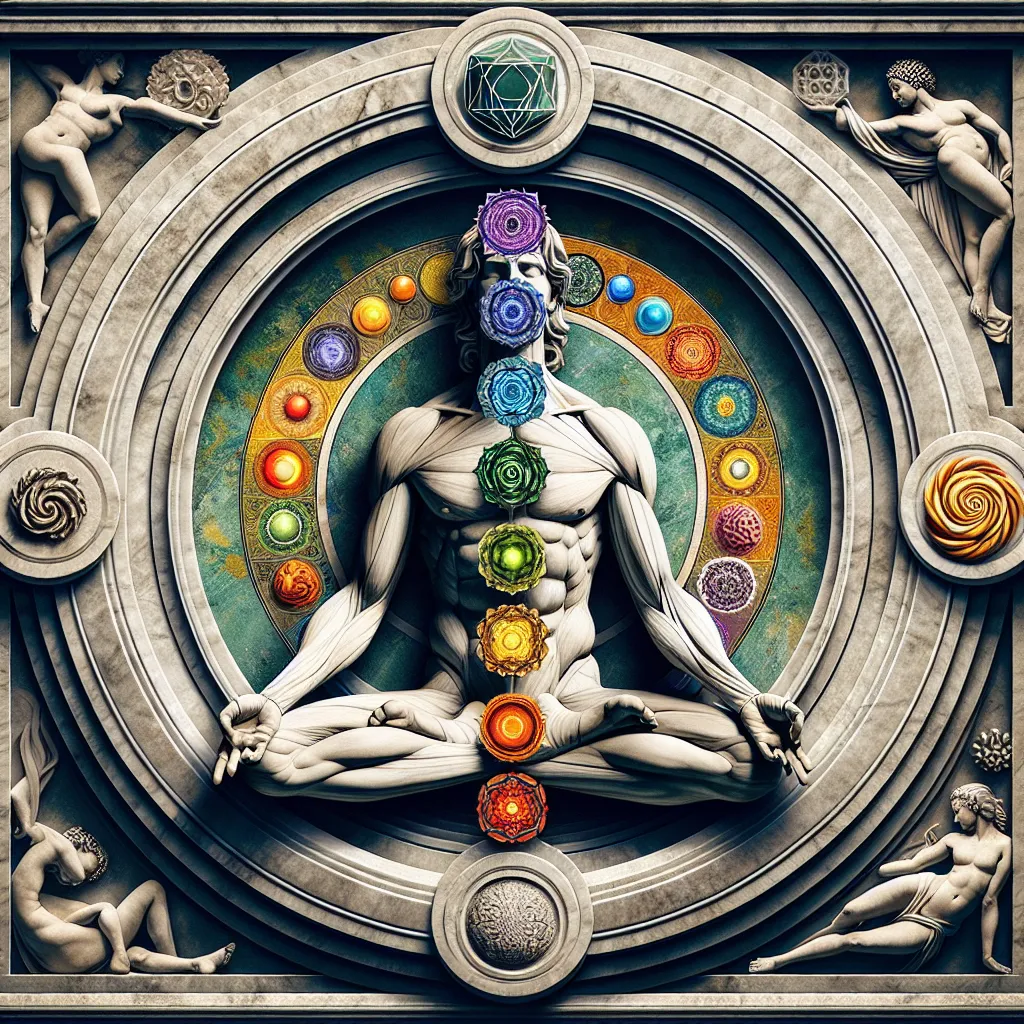
- Published on
- Authors

- Name
- You
Chakras in Modern Yoga: Integrating Ancient Wisdom with Contemporary Practices
Introduction
In the vast tapestry of yoga, the chakra system holds a central role as a bridge between the physiological and the metaphysical realms. Chakras, derived from the Sanskrit word for "wheel" or "disk," are considered energy centers within the human body that influence everything from physical health to emotional stability and spiritual growth. Modern yoga practices have increasingly incorporated these ancient concepts, harmonizing them with contemporary lifestyle and understanding. This article delves deep into how modern yoga integrates the wisdom of chakras with today's practices, offering a holistic approach to well-being.
The Chakra System: An Overview
The traditional chakra system comprises seven primary energy centers, each associated with specific physical, emotional, and spiritual attributes. Below is an outline of each chakra along with their symbolic color and primary focus:
| Chakra | Sanskrit Name | Color | Location | Primary Focus |
|---|---|---|---|---|
| Root Chakra | Muladhara | Red | Base of the spine | Survival, Grounding |
| Sacral Chakra | Svadhisthana | Orange | Lower abdomen | Creativity, Sexuality |
| Solar Plexus Chakra | Manipura | Yellow | Upper abdomen | Power, Will, Self-Esteem |
| Heart Chakra | Anahata | Green | Center of the chest | Love, Compassion, Relationships |
| Throat Chakra | Vishuddha | Blue | Throat | Communication, Expression |
| Third Eye Chakra | Ajna | Indigo | Forehead | Intuition, Insight |
| Crown Chakra | Sahasrara | Violet | Top of the head | Enlightenment, Spirituality |
Historical Context
Historically, the concept of chakras can be traced back to early traditions in Hinduism and later adopted into various schools of Buddhism and other spiritual systems. Energetic practices involving chakras have been documented in ancient texts such as the "Upanishads" and "Tantras". These scriptures describe techniques to awaken and align chakras for spiritual enlightenment and holistic health.
Modern Yoga and Chakras
In contemporary yoga practices, integrating chakra work entails blending physical postures (asanas), breath control (pranayama), and meditation techniques with a focus on these energy centers. The fusion of these elements brings about a balanced and enhanced yoga practice, tuned to the needs of modern practitioners.
Asanas and Chakras
Specific yoga poses are believed to stimulate and balance each chakra. For example:
- Root Chakra (Muladhara): Poses like Mountain Pose (Tadasana) and Warrior Pose (Virabhadrasana) are grounding and help in establishing a sense of stability.
- Heart Chakra (Anahata): Poses such as Camel Pose (Ustrasana) and Bridge Pose (Setu Bandhasana) open the chest area, fostering love and compassion.
Pranayama and Chakras
Breathing exercises are integral in activating and harmonizing chakras. Ujjayi Breath and Nadi Shodhana (Alternate Nostril Breathing) are common techniques that enhance energy flow and balance throughout the chakra system.
Meditation and Visualization
Meditation techniques involve focusing on each chakra, often visualizing the associated color and energy center, to cleanse and energize the chakras. Guided meditations specifically designed for chakra alignment are popular in yoga studios and online platforms.
Scientific Correlations
Modern science acknowledges the positive effects of yoga and meditation practices on the nervous system, endocrine system, and overall mental health. Although chakras themselves are not scientifically proven entities, the physical and emotional benefits of practices aligned with chakra work resonate with findings in neurobiology and psychology.
Neurobiological Insights
- Brainwave Activity: Meditation practices that focus on chakras have been shown to alter brainwave patterns, inducing states of relaxation and improved mental clarity.
- Endocrine System: The chakra system loosely aligns with major endocrine glands, suggesting a holistic approach to managing bodily functions through yoga and meditation.
Conclusion
The integration of ancient chakra wisdom within modern yoga practices presents a powerful nexus of tradition and innovation. By combining yoga asanas, pranayama, and meditation with a focus on the chakra system, practitioners can achieve a harmonious balance that promotes physical health, emotional stability, and spiritual growth. As we continue to explore and expand these intersections, we deepen our understanding of both ancient wisdom and contemporary science, opening pathways to holistic well-being.
Further Reading
- "Wheels of Life" by Anodea Judith
- "The Yoga Sutras of Patanjali" by Swami Satchidananda
- Research articles on the effects of yoga and meditation on the nervous system and mental health
Resources
- Yoga Journal
- Chakra Meditation Guides
- Local yoga studios offering chakra-focused classes and workshops
Namaste.
